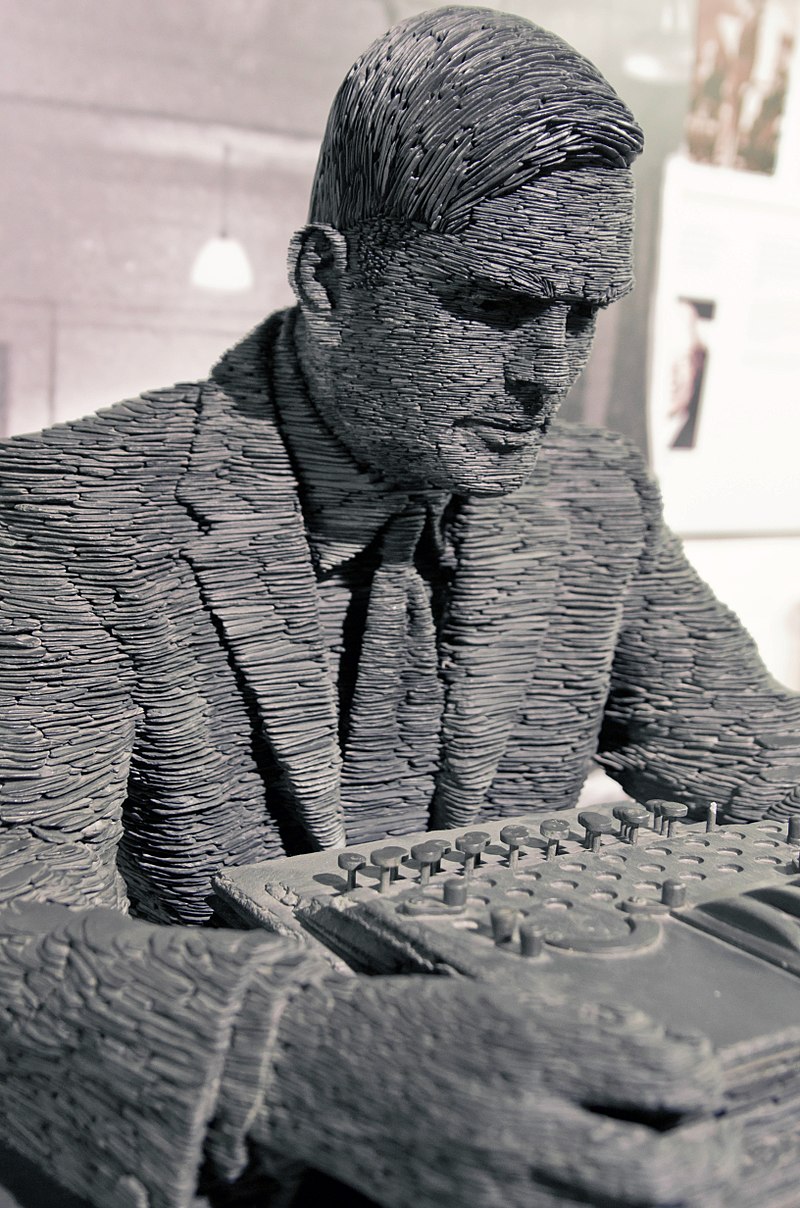Alan Turing’s original “computer” was actually a human being…
But will human beings now be thought of as computers?One of the habits of the modern mind is division. If we are Christians, we might divide our profession of faith on Sunday morning from our daily lives Monday through Saturday (particularly, it seems, when it comes to Friday night). Then, when we build compartments, we often divide our view of the person, separating a Christian vision of reality from our use of technology. As it turns out, however, our view of the imago dei, or the image of God in man, plays a significant role in the way we view technology—particularly artificial intelligence (AI).
According to theologian John Calvin (1509–1564), the primary way we can distinguish between a person and a beast is the intelligence of the person. For instance, Calvin says that the intelligence with which “we conceive the invisible God and the angels” is seated in the spirit and the spirit is the image of God in man (Institutes, 1:xv:2). Tying the imago dei to the rational ability of the person—the ability to reason and think—is still a staple of theology. More recently, for instance, Carl F. Henry (1913–2003) has argued: “The structure of human consciousness is explained by its inherent logical structure, and this structure of logic, in turn, is explained by the mind of God” (God, Revelation, and Authority, v:17). How does this understanding of the imago dei impact our view of technology? Let’s compare it to a common naturalistic view of the uniqueness of the person. A naturalistic view assumes that physical nature is all there is. There is nothing outside or beyond it.

A good place to start is with Alan Turing, one of the pioneers of information technology, who holds to the same sort of relationship. In Computable Numbers (1936), Turing breaks the work of a “computer”—he meant a human being who computes (calculates) mathematical results rather than a modern collection of electrical and optical components—into small, discrete steps. In the paper, he wants to show how to build a machine that could do the work of the human “computer.” Throughout Turing’s paper, the human computer, the person, is reduced to the ability to complete the steps required to solve a mathematical equation.
In Computing Machinery and Intelligence, (1950) Turing proposes the Imitation Game, in which a person is challenged to determine which of two correspondents is a computing machine, and which is another human being. According to Turing, if the computing machine can “fool” the person into thinking it is another person, the computing machine can be said to be “intelligent.” While Turing might not have held that the computing machine being “alive” in the same sense as a person, he implies throughout the paper that such a computing machine can be called conscious in some sense. More recently, Marcin Miłkowski takes equating the thought of computers and humans to its logical conclusion. Writing in Philosophy and Computers, he argues the mind should be thought of as a computer.
Comparing the Christian tradition which considers the imago dei primarily a matter of rational thought and the secular view of Turing and Malinowski shows they are similar in their outlook. That is ironic, given that the term computer once referred to a person who performed mathematical calculations. In both cases, a person’s uniqueness or place can be reduced to their rational ability—hence both are reductionistic views of the person.
This isn’t merely a philosophical point. The reductionist view of the person expressed by Turing and Miłkowski underlies much of the work in socially based computing systems, such as social media and many of the recommender systems used in retail and other environments. They affect us whether we are aware of it or not.
To counter the effects of secularism in culture, we need to start with what underlies the technology, rather than with the technologies themselves. We must broaden our view of personhood in theology, including relational and moral (or ethical) aspects, in order to develop a fuller critique of the application of modern information technology and its impact on culture—as counterintuitive as this might seem at first glance.
We must recover the vision that a person is more than rational thought or intelligence; the person is also a will, having final causes, designed to certain final ends and created for relationship in ways that evolution, or the reductionistic view of the person as a computing engine, cannot explain away.
More from Russ White on the choices that face us today:
Cash for your data won’t solve Big Tech privacy issues. It seems like such a great idea… at first. But how do you know what the data is really worth?
Are you trapped in a news bubble? Russ White: The news filtered to you might leave out important things you need to know. But how can you tell? Before we talk about how to get out of the news filter bubble, we need to look at how it actually works.
Escaping the news filter bubble: Three simple tips Spoiler: Reduce the amount of information big providers have about YOU. Over time, unnoticed bubbles form ever more effective barriers against alternative information, maybe information you need. But getting out requires only a few simple steps.
Pop-ups? Just say no, and close those tabs! Making the internet work for YOU means, among other things, getting control of who can follow you around. If allowing these notifications sounds like a perfect avenue for an attacker, that’s because it is. This attack surface is a very large hole in the security of your computer.
